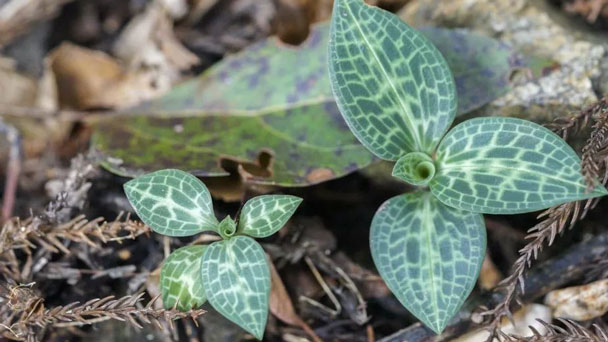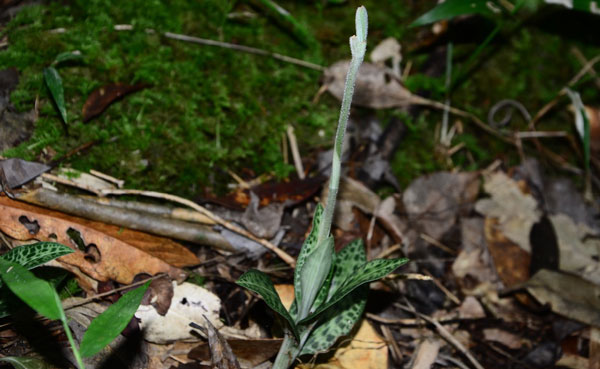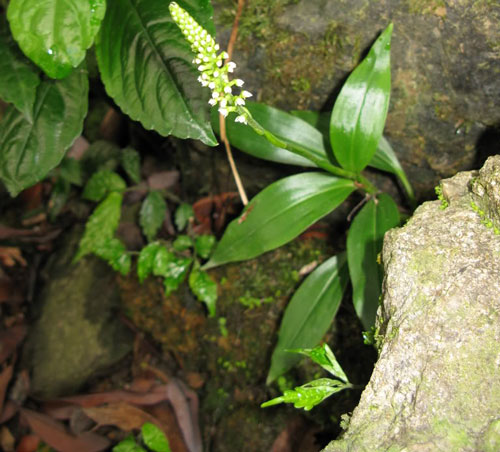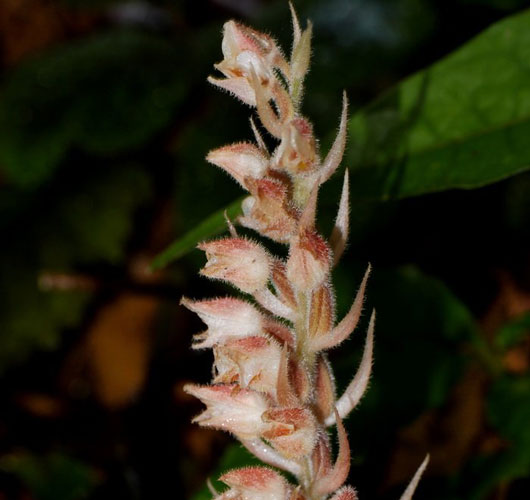Rattlesnake Plantain: Grow & Care for Goodyera
Written by Iris
Oct 14 2021

As one of the smallest evergreen perennials in eastern North America, Rattlesnake Plantain has growth habits similar to those of lawns and weeds. Although there is a certain degree of similarity between the two, Rattlesnake Plantain is actually an orchid.
Rattlesnake Plantain grows in open woods east of USDA hardiness zones 4-10 and likes dappled sunlight and competition from shrubs or perennials. Rattlesnake Plantain can be found in dry to wet, well-drained acidic soils. In dry places, it almost always grows in the soil. But in wet places, Rattlesnake Plantain may occasionally perch on mossy rocks or rotting logs in epiphytic fields. Following are details on how to grow and care for Rattlesnake Plantain.
Scale insects: They mostly reproduce in high temperature and high humidity environments. After they are found, Rattlesnake Plantain should be sprayed with omethoate or malathion. If the situation is not serious, they can be caught manually.
Goodyera oblongifolia: Also known as the western rattlesnake plantain, this orchid has blue-green foliage and blooms profusely with small white flowers.
Goodyera pubescens: Known as the downy rattlesnake plantain, this plant has blue-green leaves with white markings and a flower stalk with downy hairs.
Goodyera repens: This species is called the dwarf rattlesnake plantain and typically grows less than a foot tall.
Goodyera tesselata: Commonly referred to as the checkered rattlesnake plantain, this orchid features green foliage with white markings that give it a checkered look.
Rattlesnake Plantain grows in open woods east of USDA hardiness zones 4-10 and likes dappled sunlight and competition from shrubs or perennials. Rattlesnake Plantain can be found in dry to wet, well-drained acidic soils. In dry places, it almost always grows in the soil. But in wet places, Rattlesnake Plantain may occasionally perch on mossy rocks or rotting logs in epiphytic fields. Following are details on how to grow and care for Rattlesnake Plantain.
Where to Grow Rattlesnake PlantainHow to Grow Rattlesnake Plantain (Goodyera)How to Care for Rattlesnake Plantain (Goodyera)Rattlesnake Plantain Light CareRattlesnake Plantain Soil CareRattlesnake Plantain Water CareRattlesnake Plantain Temperature & Humidity CareRattlesnake Plantain Fertilizer CareRattlesnake Plantain Pests & Diseases CareVarieties of Rattlesnake PlantainRattlesnake Plantain (Goodyera) FAQIs rattlesnake plantain rare?Why is it called rattlesnake plantain?What is rattlesnake plantain used for?
Where to Grow Rattlesnake Plantain
Plant rattlesnake plantain orchids in a location that receives full sun if you live near a coast, but plant them in an area that receives afternoon shade if you live inland. The ideal location is beneath an evergreen where they will receive dappled sunlight. They grow best in well-drained soil.
How to Grow Rattlesnake Plantain (Goodyera)
Rattlesnake Plantain propagation is generally use divided branches in spring and autumn. Each clump must have 5 connected pseudocorms. Then insert it into the prepared soil and water it thoroughly to ensure that the soil is moist. During the period, reduce watering and keep it in a cool place. It will take about 10-15 days to take root.How to Care for Rattlesnake Plantain (Goodyera)
Rattlesnake Plantain Light Care
Rattlesnake plantains grow naturally in the dappled sunlight of taller trees and shrubs in forests. So in the home garden they thrive in partial sun. Make sure not to expose your rattlesnake plantain to too much sunlight, which can cause leaf tip burn and scorch the plant's foliage. However, too little light can result in an orchid that doesn’t bloom.Rattlesnake Plantain Soil Care
Rattlesnake Plantain plants usually prefer soil rich in organic matter with a slightly acidic to neutral pH. Torrent drainage is also necessary. For container plants, orchids are usually well drained potted mixtures.Rattlesnake Plantain Water Care
Rattlesnake plantain even likes soil moisture, but doesn't like wet conditions. Water every time the soil starts to dry, but make sure the plants don't stay in the waterlogged soil. If the leaves of Rattlesnake Plantain are dying, it could be a sign of root rot caused by too much moisture in the soil. Water the orchids to keep their soil just slightly moist at all times during spring and summer. Allow the top 2 inches of soil to dry out before watering it in autumn and winter.Rattlesnake Plantain Temperature & Humidity Care
Temperature requirements vary with individual growing areas of each species. But in general, many Rattlesnake Plantain plants prefer milder temperatures. They also like moderate humidity levels and can handle high humidity if there is good air circulation around the plants. They should be protected from strong winds, which can dry out and damage leaves.Rattlesnake Plantain Fertilizer Care
Follow the label instructions and feed the rattlesnake plantain with a balanced orchid fertilizer throughout the growing season (spring through fall). Compost mixed into the soil is also beneficial. If the plant is not flowering, it could be an indication that it needs more food.Rattlesnake Plantain Pests & Diseases Care
White sclerotia disease: it will cause root rot after the disease occurs. At this time, clean soil should be replaced, and proper ventilation should be carried out. Plants that receive the disease should be burned to avoid infecting other plants.Scale insects: They mostly reproduce in high temperature and high humidity environments. After they are found, Rattlesnake Plantain should be sprayed with omethoate or malathion. If the situation is not serious, they can be caught manually.

Varieties of Rattlesnake Plantain
The North American Goodyera species that commonly use the name rattlesnake plantain include:Goodyera oblongifolia: Also known as the western rattlesnake plantain, this orchid has blue-green foliage and blooms profusely with small white flowers.
Goodyera pubescens: Known as the downy rattlesnake plantain, this plant has blue-green leaves with white markings and a flower stalk with downy hairs.
Goodyera repens: This species is called the dwarf rattlesnake plantain and typically grows less than a foot tall.
Goodyera tesselata: Commonly referred to as the checkered rattlesnake plantain, this orchid features green foliage with white markings that give it a checkered look.

Rattlesnake Plantain (Goodyera) FAQ
Is rattlesnake plantain rare?
Even though it is not abundant, rattlesnake plantain is widespread throughout North America extending from Canada and Alaska in the north, to Mexico in the south.Why is it called rattlesnake plantain?
The rattlesnake plantains get their name from their broad, rounded leaves similar in shape to those of plantain, a common lawn weed. Yet, they are neither plantains nor weeds, but orchids (family Orchidaceae).What is rattlesnake plantain used for?
Downy rattlesnake plantain is useful for woodland wildflower plantings and as an indoor terrarium plant. Medicinal Use: Native Americans used it to treat snakebites, burns and many other ailments.Latest Updated
- Benefits of Bugleweed - 7 Science-backed Health Benefits
- Bugleweed Dangers & Side Effects - Is It Poisonous?
- How to Plant Evergreen Trees - What You Should Know
- When to Plant Evergreens - Grow Guide for Evergreen Trees
- 12 Wonderful Evergreen Shrubs for Your Garden
- 12 Popular Evergreen Plants with Pictures for Beginners
- When And How To Prune A Lilac Bush Like a Pro
- How to Grow & Care for Lilac Vine (Hardenbergia Violacea)
- Japanese Lilac Tree (Syringa Reticulata) Care & Propagation Guide
- Shumard Oak Pros and Cons - What to Know
Popular Articles
- Winter maintenance of Antirrhinum Majus
- How to Grow Terminalia Mantaly Tree
- How to Grow and Care for Crossostephium Chinense
- How to grow Antirrhinum Majus in spring
- Peristeria Elata (Dove Orchid) Profile: Info & Care Guide
- Underwatered Snake Plant (Sansevieria Trifasciata) - Signs And How To Fix
- How to Care for Brazilian Jasmine Plant (Mandevilla Sanderi)
- How to Grow & Care for Graptopetalum Purple Delight in Summer
- Rosa Chinensis (China Rose): Plant Growing & Care Tips
- How to Care for Baby Sun Rose (Aptenia Cordifolia)